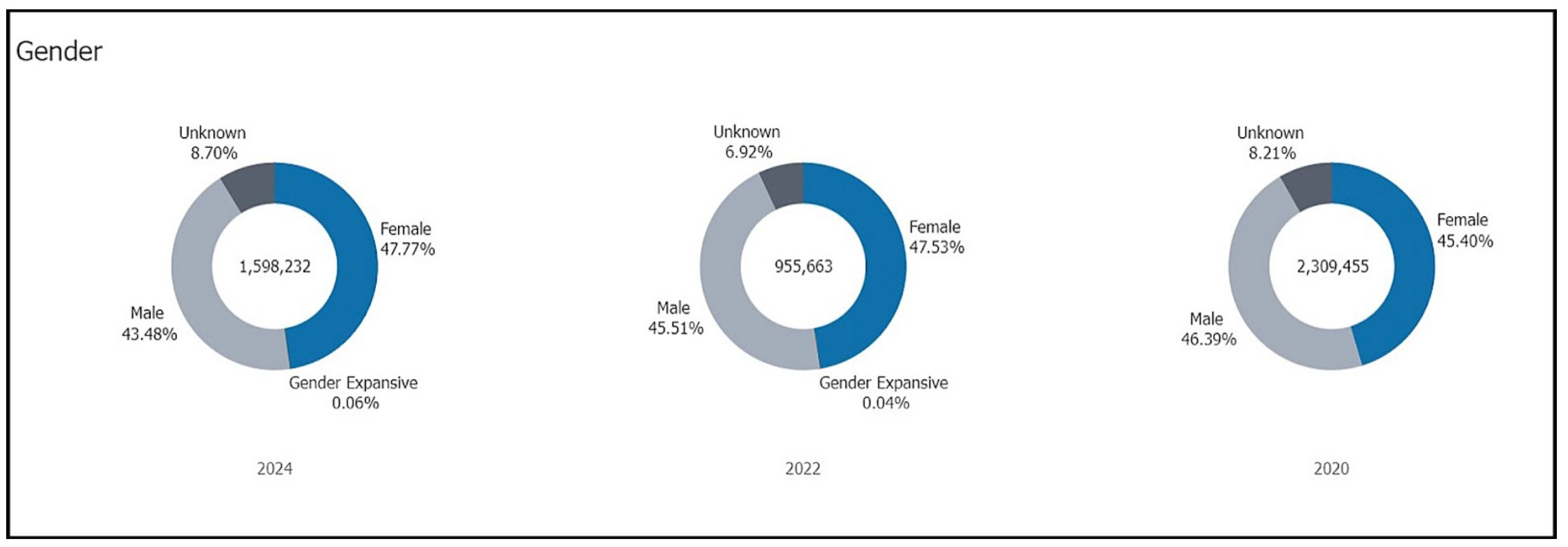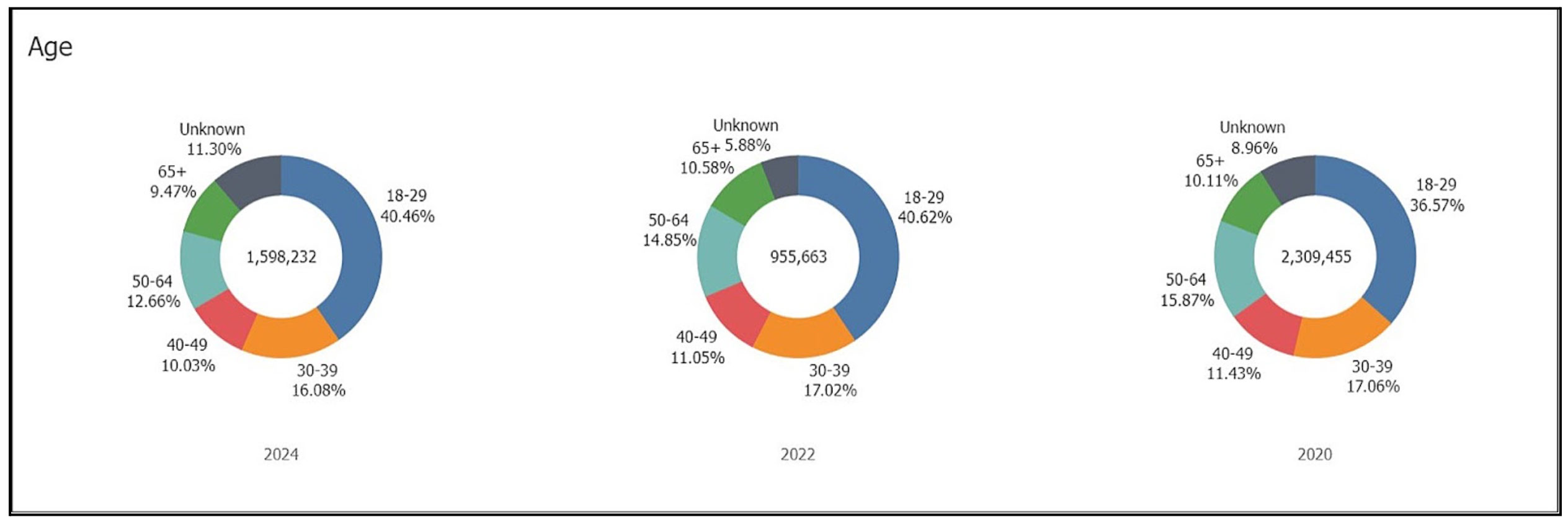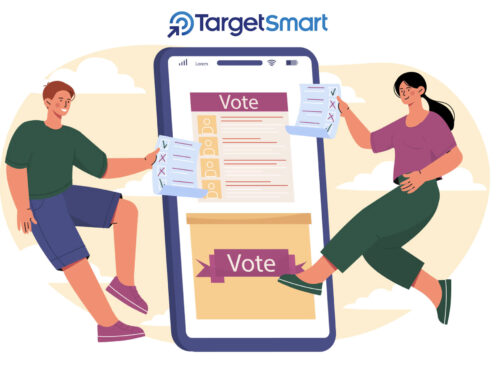We’ve been bringing you the latest early vote analysis for the last several weeks thanks to our industry leading early vote tool, TargetEarly. But now, as we head into the last few days of the campaign, I thought it would be a good time to revisit our analysis from over the summer on The Harris Effect, where we saw massive increases in voter registrations, particularly among women and women of color, in the week after Vice President Kamala Harris ascended to the top of the Democratic ticket.
Have those trends held true? And how has the electorate changed since? Let’s take a look.
Big Picture: A Changing Electorate
Before we look at voter turnout, we need to look at who is registered to vote. While some states allow same day voter registration on Election Day, many key battleground states (like GA, NC and AZ) do not for all or most potential voters. Campaigns need to get voters registered and then turn them out, and we won’t know who turned out until next week.
We’ve seen the electorate shift in Harris’ favor through voter registration. The challenge is turning those voters out, but I’d rather be the Harris campaign with a bigger pool of potential voters than the GOP ticket.
Trends Across the Battleground States
At this point, we all know that this is an extremely close election that’s going to be decided in a handful of states where the margins are expected to be razor thin, so every voter who registers and votes is truly going to matter. In these states, including AZ, GA, MI, NC, NV, PA and WI, since Vice President Harris became the presumptive nominee, we have seen:
(Note: The data below shows differences in the share of registered voters, not percentage differences.)
- The Modeled Democrat share of new registrants out-paces that of modeled Republicans by 16%. This is a full 16 point margin swing compared to the same period in 2020.
- Voter registration among Black, Hispanic, and AAPI voters (all key members of the Harris coalition) is up across the board compared to 2020, while registration among White voters is down.
- Since VP Harris became the nominee, Black voters account for 16.86% of all new registrants. Over the same period in 2022 and 2020, they accounted for 10.1% and 13.9%, respectively.
- The share of new Hispanic and AAPI registrants is both up a percentage point over 2022 and 2020.
- Meanwhile, in 2020 and 2022, white voters made up 73% and 74% of all new registrants, respectively, but since VP Harris became the nominee, they are accounting for just 69% of all new registrants.
Voter Registration Gender Gap
Since Donald Trump’s handpicked Supreme Court overturned Roe v. Wade and stripped women’s reproductive rights across the country, we’ve seen the gender gap grow both in voter registrations and voter turnout, which was on display in the midterms in 2022. And now, since Vice President Harris has become the presumptive nominee, we’ve seen that trend continue:
- Women continue to out-register men across the battleground states, similar to what we saw in 2022 and 2020. Since Harris became the nominee, though, there has been a 4-point gender gap among new registrants. This is a 5 point margin swing over the same period in 2020 when men were outregistering women.
- When you zoom in even further, the share of new voter registrations among Black women is up 3 points over the same period in 2020.
- In North Carolina, the share of new registrations from women leads that of men by 7 points, a 6 point increase over the same period in 2020.
- The share of new registrations coming from Black women are up 3 points, and 6 points among young Black women compared to the same period in 2020.
- In Georgia, the gender gap among new registrants is +9% women, a full 9 point increase over the same period in 2020.
- The share of new registrations from Black women increased by 4 points compared to 2020, and the share of new registrations from young Black women increased by 3 points.

The Youth Movement
If Democrats are going to win on Election Day, they are going to need high turnout from young people. In the voter registration numbers we’ve looked at, it’s clear that Vice President Harris has had a particularly strong impact on this age group in terms of getting them fired up to register to vote:
- Since VP Harris became the nominee, the share of new registrations from 18-29 year olds is up 4 points compared to the same period in 2020 across the battleground states.
- One of the most striking stats I’ve seen in analyzing all of this data comes from Arizona, where the share of new registrations from 18-29 year olds are up 15 points over the same period in 2020. And when you zoom in even further, new registrations among young Black and Hispanic voters are up 13 points.
- In Pennsylvania, the share of new registrations from 18-29 year olds is up 11 points compared to the same period in 2020.
- In Nevada, the share of new registrations from 18-29 year olds is up 5 points compared to 2020.

Vice President Harris’ ascension to the top of the ticket has changed the makeup of the electorate and fired up some key Democratic constituencies. It’s too early to say if this will deliver her a win, but it’s certainly a reason for optimism. Heading into the home stretch, I’d encourage you all to continue to follow along on X and on our website as we continue to bring you the latest analysis as the data becomes available.



